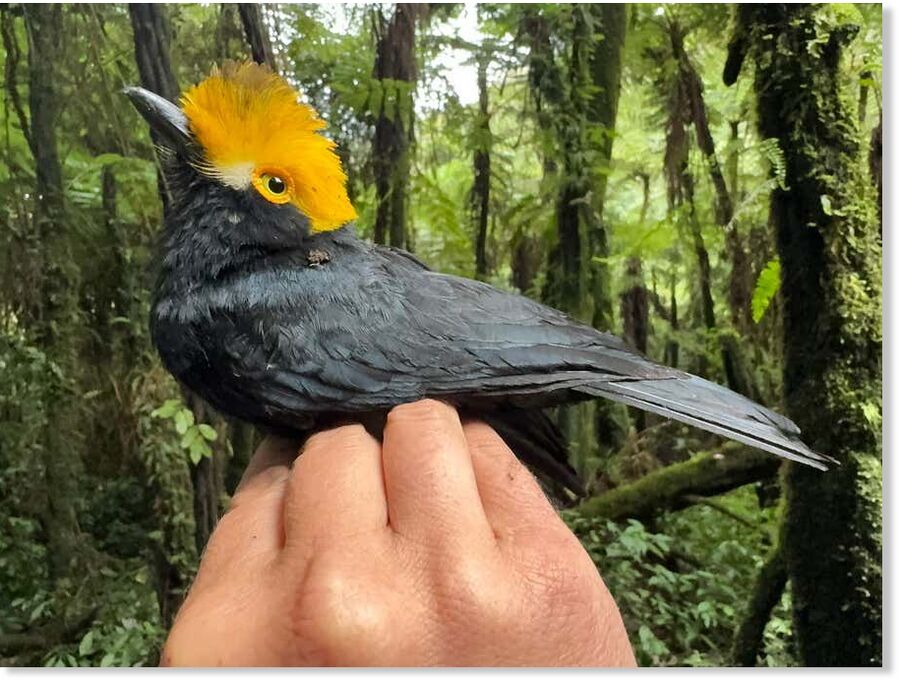
A rare bird with a stunning yellow crest has been photographed for the first time in the tropical mountains of the Democratic Republic of the Congo - almost two decades after its last confirmed sighting.
The yellow-crested helmetshrike (Prionops alberti), also known as King Albert's helmetshrike, is a small bird that lives in the humid forests of the Albertine Rift mountains in central Africa. Adults are covered in glossy black plumage with a splendid crown of bright, golden feathers on their heads. Their eyes are surrounded by distinctive orange tissue called a wattle.
After going unseen for many years, the helmetshrike was listed as a lost species by the Search for Lost Birds partnership.
Michael Harvey at the University of Texas at El Paso and his colleagues finally encountered it again during a six-week expedition to the Itombwe mountains between December 2023 and January 2024.
The team members were wandering through the cloud forests when they stumbled across a group of the elusive birds.
"When I came across the birds out on the trail, I was blown away," says Harvey. "I was expecting the species to be unique and beautiful, but I was not prepared for how bizarre and charismatic they were."
In all, 18 helmetshrikes were spotted at three locations during the expedition. This suggests there may be a healthy population of the birds, which are currently considered vulnerable by the International Union for Conservation of Nature.
The group also spotted other species that were considered lost during the trip, including the red-bellied squeaker frog (Arthroleptis hematogaster), last seen in the 1950s.
"The unique, poorly known and specialised species of the Congo are still out there," says Harvey. "However, interests like mining and forestry are moving in before scientists and conservationists have had the opportunity to step in and work with local communities to protect them."



Reader Comments
This video shows a singing bird box made by Pierre Jaquet-Droz and Jean-Frédéric Leschot, Switzerland circa 1785. [Link]
AI, generated manufactured by a computer...The ultimate in trans humanism. No human touching hands in the making.
[Link] Society is one step closer to dystopia
Maybe it is indication, that we will be living in a psychotic pathological reality created by the matrix created by AI